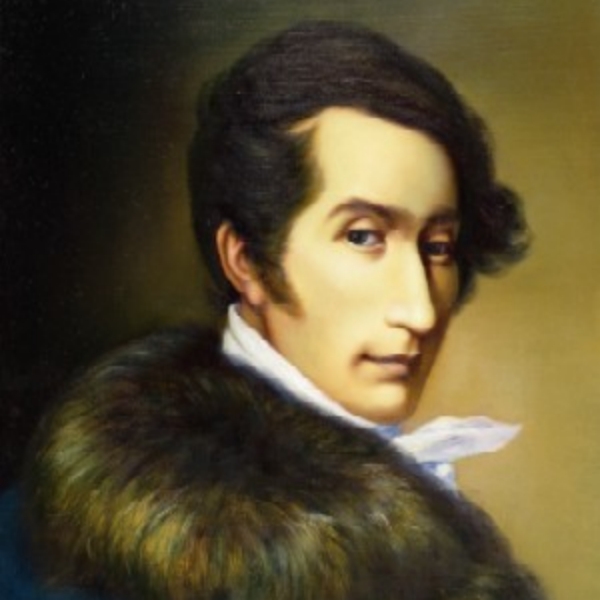MCO’s Clarinet Heaven can be heard in St Kilda on Saturday 29 October at Linden New Art. This program is also being performed on tour in Mount Beauty, Pyramid Hill, Bendigo, Elmore & Heathcote.
Ludwig van Beethoven
String Trio in C minor Op. 9 No. 3
Ludwig van Beethoven (1770–1827) wrote five string trios in his early years in Vienna. His first trio dates from 1793 as the String Trio in E flat Op 3 and the second as a Serenade Op 8 in 1797. The other three works for violin, viola and cello are grouped as Op 9 and were written in 1797 and 1798 and published the next year.
The Op 9 string trios mark an important landmark in Beethoven’s compositional life and were the last essays using the resource of the three string instruments. These works proved to be the precursor of the string quartet which became the most significant form in his compositional output. The trios form an important development leading to the first group of string quartets Op 18 published in 1801. The three trios are all in four movements which was a move away from the two earlier works that were more in the multiple movement form of the serenade.
The key of C minor remained important throughout Beethoven’s output. Among other works there are the three piano sonatas (Opp 10 no 1, 13, and 111), the fifth symphony and the third piano concerto, and the 32 Variations on an Original Theme in C minor WoO 80.
The C minor trio is a celebration of overt energy and passion. The work is marked by dramatic changes both within and between the movements. The second movement Adagio in C major provides a peaceful break from the sheer momentum of the other movements. Throughout the trio we see Beethoven developing motifs (or ideas) as opposed to long wrought melodies. The inventiveness of this compositional device is notable throughout the work.
Nicholas Buc
Shadow Dances
Nicholas Buc is a composer, conductor, arranger, violinist and pianist. He studied Composition with Brenton Broadstock and Stuart Greenbaum at the University of Melbourne, where he received the inaugural Fellowship of Australian Composers Award. As the recipient of the Brian May Scholarship for Australian film composers, he recently completed a Master’s degree in Scoring for Film and Multimedia at New York University, receiving the Elmer Bernstein Award for Film Scoring.
Nicholas is regularly commissioned and some of his works have been premiered by the Royal Melbourne Philharmonic Orchestra and Choir, The Australian Voices, Melbourne Chamber Orchestra, the Benaud Trio and Concordis Chamber Choir. He has also written for film and television, with some of his work being screened at festivals and theatres around Australia, Asia and the US. In 2007 he was nominated for “Best Original Song Composed for the Screen” in the APRA-AGSC Screen Music Awards, and in 2015 was a winning finalist of the NYU Film Scoring Competition.
Nicholas Buc writes: “Shadow Dances presents a short set of playful vignettes all based around the idea of light and shade. The opening syncopations act as a kind of musical anchor, announcing the arrival of each section and serving as the rhythmic crux of the work. With a constantly shifting tonality from major to minor throughout, the piece revels in always being in a state of motion. Following a cheeky tango and a galloping horse trot, a moody middle section calms the senses before being taken over by blustery string sweeps and a fiery, funky Latin rhythm.”
Wolfgang Amadeus Mozart
Clarinet Quintet in A major K581
The Clarinet Quintet was completed on 29 September 1789 and first performed by Anton Stadler at a concert in December 1789. It was composed while Mozart was working on his opera Così fan tutte. Mozart also wrote for Stadler the 1786 Kegelstatt Trio K498 (for clarinet, viola and piano) and the Clarinet Concerto K622 in 1791. The Quintet was written for basset clarinet and string quartet.
The opening Allegro establishes the mood for the work. The melodic lines are shared among the instruments equally as is the virtuosic treatment of the themes. The Larghetto is the emotional heart of the work. It is in this movement that we experience a sense of melancholic poignancy through the long melodic line of the clarinet. This movement is in sonata form.
The third movement is a minuet with two trios. The first trio is strings only while the second is for clarinet supported by the strings. The Allegretto finale is a set of five variations traversing a number of thematic and harmonic developments leading to a final lyrical Adagio that transitions into an Allegro coda.
Carl Maria Von Weber
Clarinet Quintet in B flat major Op 34 (J182)
IV. Rondo: Allegro giocoso
Carl Maria von Weber (1786–1826) was a German composer, conductor, pianist, and critic. His compositions span opera, choral music, and instrumental music, particularly for piano and clarinet. His opera, Der Freischutz (1821) is considered to be the first great Romantic opera. His work influenced composers such as Mendelssohn, Wagner, Meyerbeer, Berlioz, and Liszt.
Weber commenced work on the Clarinet Quintet in 1811 at the same time as he composed the three clarinet concertos. The work was finished in 1815 and first performed in 1816. The work is in four movements: Allegro, Fantasia Adagio, Menuetto, Rondo Allegro. The finale is marked by drive and momentum with the virtuosic possibilities and timbral qualities of the clarinet exploited among the contrasting sections of the rondo. Throughout there is an overriding sense of joy and fun.
Composers since Mozart and Weber have contributed to the clarinet quintet literature. Some of these include Meyerbeer (1813), Busoni (1880), Glazunov (1886), Brahms (1891), Reger (1916), Howells (1917), Hindemith (1923), Bliss (1932), Jacob (1939), Françaix (1977), and Babbitt (1996).
*David Forrest

